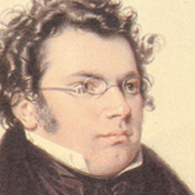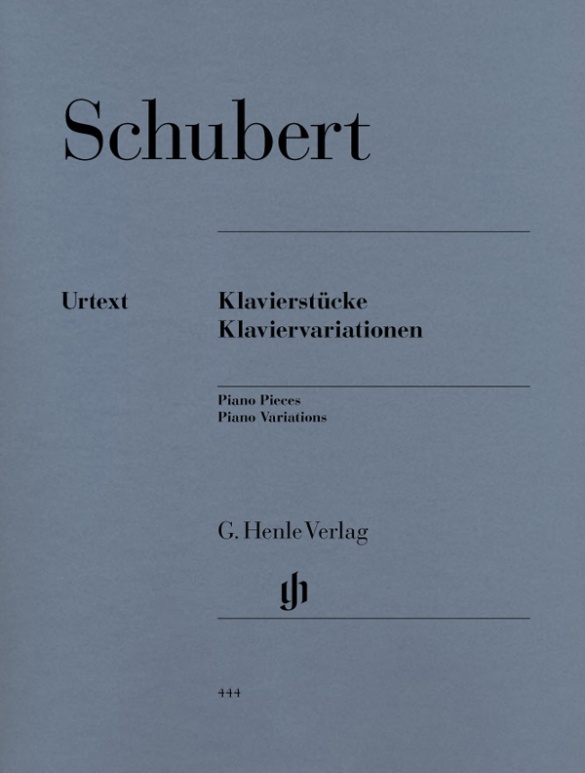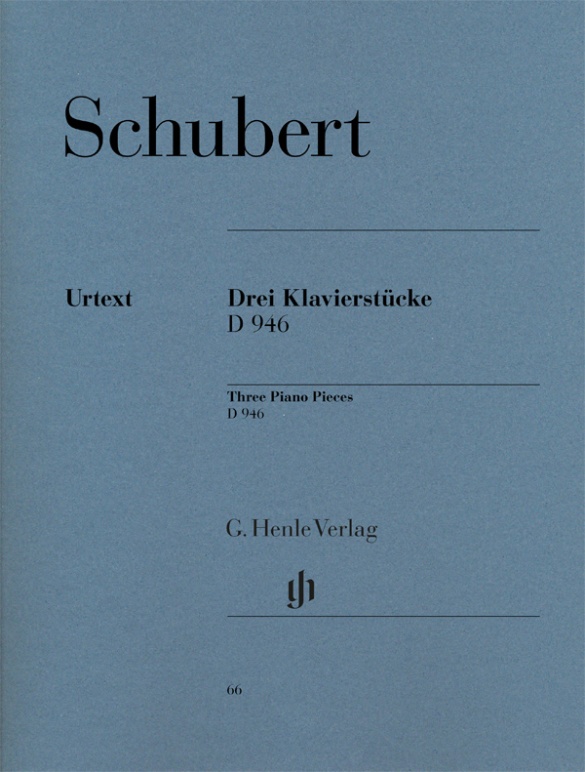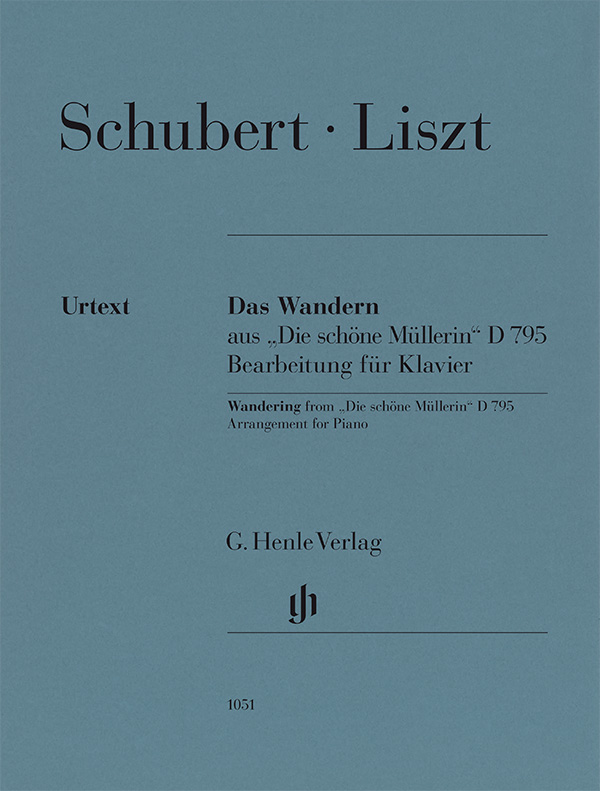Franz Schubert
Piano Pieces - Piano Variations
This volume gathers together, in chronological order, a selection of solo piano pieces that Schubert, to be sure, created as “shorter” occasional works but which form an important part of his complete oeuvre and often dazzle with their bold harmonies. Our Urtext volume includes compositions from his youth up to shortly before his death. The selected pieces are of a wide spectrum of difficulty (from level 3 to level 7). They offer the more advanced pupil many options by which to approach Schubert’s piano works, and the less advanced pupil a good introduction and some worthwhile challenges.
内容/詳細
作曲家について

Franz Schubert
He is not only the inaugurator of the art song and its most important composer in the nineteenth century, but he also realized a compositional concept in his instrumental works that opposed Viennese Classicism. Underlying the “heavenly length” of his works is a configuration of time that does not function according to the principle of motivic development, but addresses the notion of lingering; modifications occur mostly not in continuous unfolding, but through sudden eruptions. His ornate songs contradict the ideal of simplicity in the Lied aesthetics of his time, and provide the basis for the art song of the nineteenth century, regarded as they were as exemplary by subsequent generations of composers; they are defined by complex harmonies, an integration of the idioms of instrumental music, semantic models, and a new relationship between text and music in which the poem as a whole is interpreted through the composition, rather than just through word painting. His immense oeuvre in spite of his brief life comprises 600 songs, including his two famous song cycles; seven complete and several unfinished symphonies (including the “Unfinished” in B minor); other orchestral works; numerous pieces of chamber music; fourteen complete and several unfinished piano sonatas as well as other piano pieces; dances for piano and four-hand works; six masses and other sacred compositions; numerous pieces for choir or vocal ensemble, especially for male voices. Although he also contributed to every genre of music theater and his friends predicted a career for him in opera, only two of his ten finished operas were performed during his lifetime, as was the incidental music to “Rosamunde.”
| 1797 | Born in Himmelpfortgrund near Vienna on January 31, the son of a teacher. First piano lessons from his brother Ignaz, violin lessons from his father at age eight. |
| from 1808 | Choirboy in the Imperial Chapel; attends the imperial and royal boys choir school (“Stadtkonvikt”), playing violin in its orchestra. Lessons from Antonio Salieri, who attempts to win over the boy enamored with Mozart, Haydn, and Beethoven to Italian opera. First surviving compositions. |
| 1811 | Composition of his first song, “Hagars Klage.” |
| 1813–14 | Attends the pedagogical secondary school, after which he teaches in his father’s school. |
| 1813/14 | Composition of the magical opera “Des Teufels Lustschloss” and the Symphony No. 1 in D major in classical form. |
| 1814 | Composition of the Mass in F Major, D 105. He writes songs, which he groups by their poets, e.g. Matthisson and Goethe, including “Gretchen am Spinnrade,” which marks the birth of the art song. |
| 1815 | Composition of the musical comedy “Claudine von Villa Bella” after Goethe and “Der vierjährige Posten.” Completion of the Symphony No. 2 in B-flat major and composition of the Symphony No. 3 in D major as well as the Masses in G major and No. 3 in D major; the song “Erlkönig,” among others. |
| 1816 | Composes 110 songs, the Symphonies No. 4 in C minor and No. 5 in B-flat major, and the Mass in C major. He leaves his parents’ home, suspends his position as teacher, and moves in with Schober. |
| 1817 | Sixty songs, including “Der Schiffer,” “Ganymed,” “An die Musik,” “Die Forelle,” “Gruppe aus dem Tartarus,” “Der Tod und das Mädchen.” Gradually his compositions are performed (his oeuvre already comprises around 500 works). Returns to his parental home. |
| 1818 | He teaches the daughters of Count Johann Karl Esterházy. Composition of four-hand piano pieces. |
| around 1819 | Composition of the Piano Quintet in A major (“Trout” Quintet). |
| 1820 | Premiere in Vienna of the melodrama “Die Zauberharfe” and the musical comedy “Die Zwillingsbrüder.” The song “Frühlingsglaube,” among others. |
| 1821 | First Schubertiade: a convivial musical- and literary evening meeting of Schubert’s circle of friends. Publication of the songs “Erlkönig” and “Gretchen am Spinnrade” as well as other Goethe songs and 36 dances. |
| 1821–22/54 | Composition/premiere of “Alfonso und Estrella,” one of the early through-composed German operas. |
| 1822 | Completion of the Mass in A-flat major; Symphony No. 7 in B minor (“Unfinished”); Wanderer Fantasy in C major for piano, which unites in one movement the four different characters of symphonic movements. |
| 1823 | Composition of the musical comedy “Die Verschworenen” (premiere in Frankfurt am Main in 1861), the heroic-Romantic opera “Fierrabras” (premiere in Karlsruhe in 1897), and the incidental music to “Rosamunde,” which is premiered in Vienna. Song cycle “Die schöne Müllerin,” songs “Auf dem Wasser zu singen,” “Lachen und Weinen,” among others; Piano Sonata in A minor, D 784. |
| 1824 | Once more teacher of the children of Count von Esterházy. String Quartet in D minor (“Death and the Maiden”). “Wandrers Nachtlied” (“Über allen Gipfeln ist Ruh”). The piano sonata takes on greater importance. |
| 1825 | Long holiday travels, including to Gmunden-Gastein, where he composes the Great Symphony in C major (No. 9 or No. 8), in which he considerably expands classical form (e.g. horn motto at the beginning, configuration of time). |
| 1827 | Song cycle “Winterreise” (contrasts dream sequences with reality); German Mass; four Impromptus for piano; Piano Trios in B-flat major, D 898, and E-flat major, D 929. |
| 1828 | Publication of the “Six Moments Musicaux” for piano. Composition of the last three piano sonatas in C minor, A major, and B-flat major (the latter with a tendency towards the esoteric), the sonata movement in A minor (“Lebensstürme”), the Mass in E-flat major. “Thirteen Songs after Poems by Rellstab and Heine” (posthumous “Schwanengesang,” “Swan Song”). In March, a concert dedicated to only his own music. Death in Vienna on November 19. |
校訂者や運指担当者について

Klaus Schilde (運指)
Prof. Klaus Schilde, born in 1926, spent his childhood in Dresden. There he was greatly influenced by Walter Engel, who taught him the piano (Kodaly method), composition and violin. From 1946–1948 he studied at the music conservatory in Leipzig with Hugo Steurer. After moving to the west in 1952 he studied with Walter Gieseking and Edwin Fischer, as well as with Marguerite Long, Lucette Descaves and Nadia Boulanger in Paris.
Schilde won numerous prizes. From 1947 onwards he gave concerts as a soloist and chamber musician on almost every single continent with renowned orchestras. He taught at the music conservatories in East Berlin Detmold, West Berlin, Munich, Tokyo (Geidai) and Weimar. From 1988–1991 he was President of the Staatliche Hochschule für Musik und Theater in Munich, where he also taught for decades as a professor. There are numerous radio and television broadcasts with Klaus Schilde as well as CD recordings. Schilde has contributed fingerings to almost 100 Henle Urtext editions.
Prof. Klaus Schilde passed away on 10 December, 2020.
製品安全に関する情報

G. Henle Verlag
製品の製造元に関する情報はこちらでご覧いただけます。G. Henle Verlag
Forstenrieder Allee 122
81476 München
info@henle.de
www.henle.com
おすすめ
autogenerated_cross_selling
このタイトルを含む他の版





